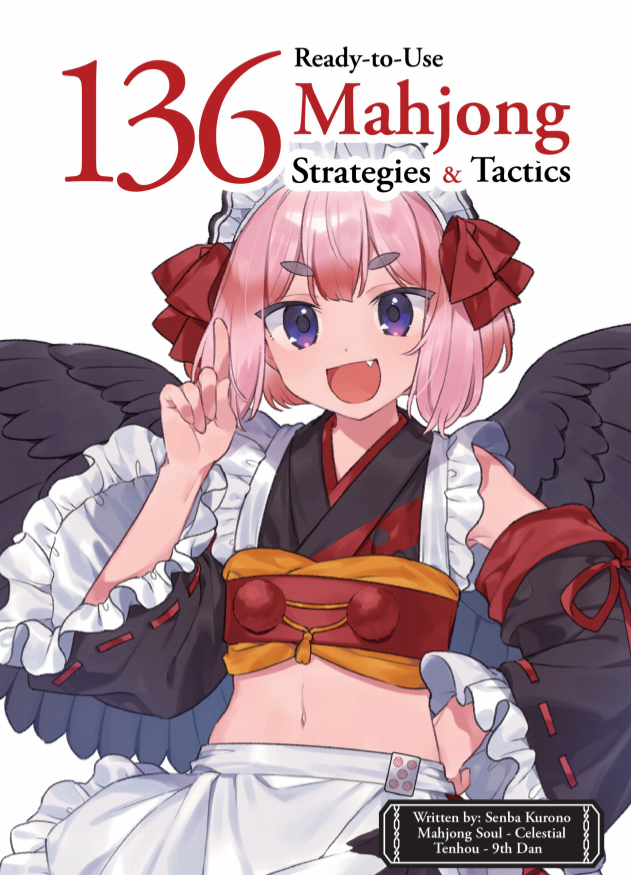Mahjong Stuff in Pon No Michi, Episode 6: T (Tetsuman) Pose
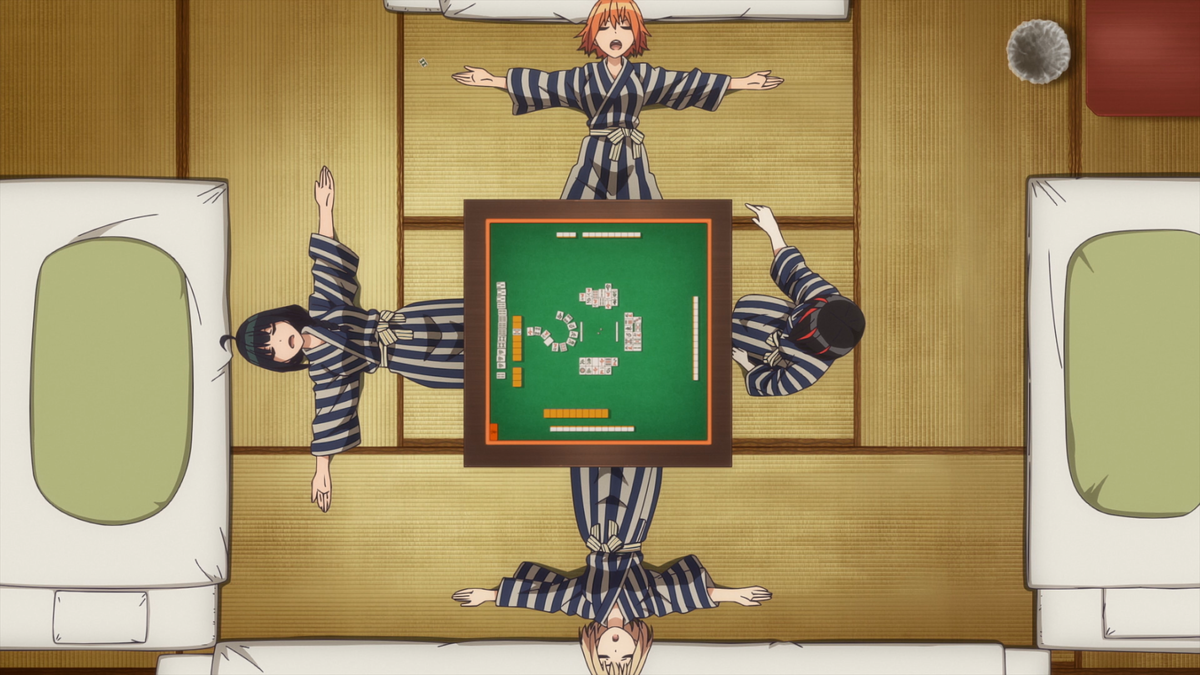
A lot of anime that take place in remote, picturesque Japanese towns are specifically trying to push tourism to their real-life settings, betting on the “otaku pilgrimage” effect proven most famously by Girls & Panzer. Pon no Michi— which, if you didn’t notice, is actually punning on the name of its setting, Onomichi— is generous enough to supply an entire episode consisting of suggestions for a day trip.
Not that you're gonna hear about any of that from me!
This is a free sample post from the "Mahjong Stuff in Pon no Michi" series on my newsletter. It's been a lot of work researching every single mahjong bit in every single episode, so the rest of this series is for paid subscribers. If you enjoyed it, please consider contributing!
(I just realized I might as well embed the entire episode in this post since the show is on Youtube. I'll retroactively do this for the rest of the series and it'll be very helpful, until these videos inevitably disappear for rights reasons.)
Gamers may want to see Onomichi for its starring role in Yakuza 6. Japanese film buffs may want to see Onomichi for its starring role in many films by the departed, eccentric director and Onomichi native Nobuhiko Obayashi (House, Tenkousei, Nerawareta Gakuen). Tenkousei is itself directly parodied in that Yakuza 6 substory about falling down the stairs.
Haneru’s dream
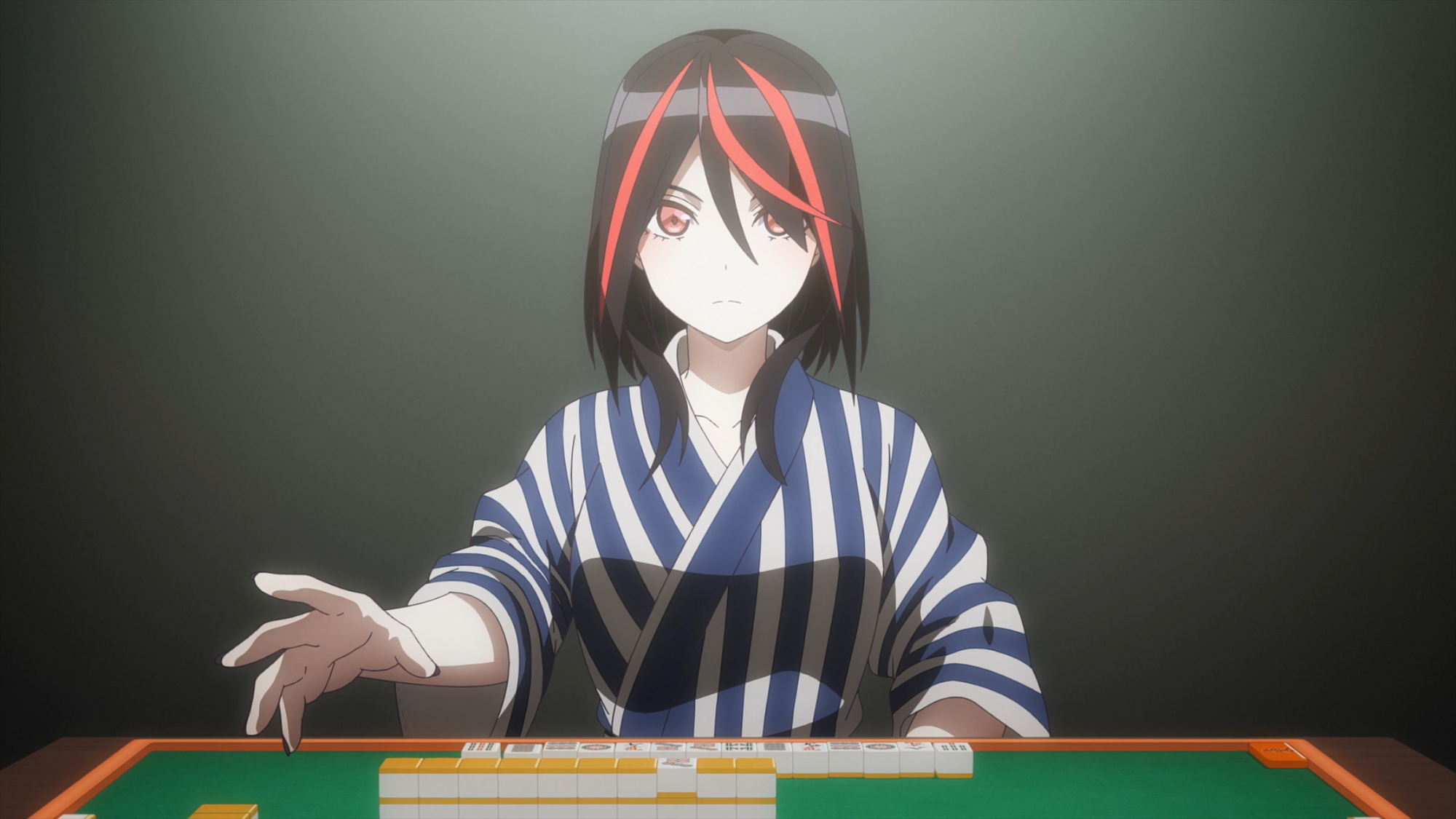
This episode, the dream is not from Kojima’s cheating video at all. If there is a source being directly referenced, I probably just don’t know what it is. But I kind of doubt that there is a source, because this scene is so deeply connected to Emi’s character and what she wants… which simply is to impress the other girls with her pure skill, looking as cool as possible while she does it. Every player dreams of this, deep down.
Emi pulls a beautiful hand. It doesn’t get any more perfect, down to the way she elegantly causes the tiles to cascade down. This is a:
- riichi (1 han)
- ippatsu (1 han)
- tsumo (1 han)
- junchan (3 han)
- sanshoku (3 han)
- with four dora.
With the dora this totals 13 han, which is called a counted (kazoe) yakuman. This reaches the point limit not by one fancy combination (like kokushi or suu ankou), but because it simply scores so high.
And she doesn’t even have her tiles sorted.
Do people really play with out-of-order hands?
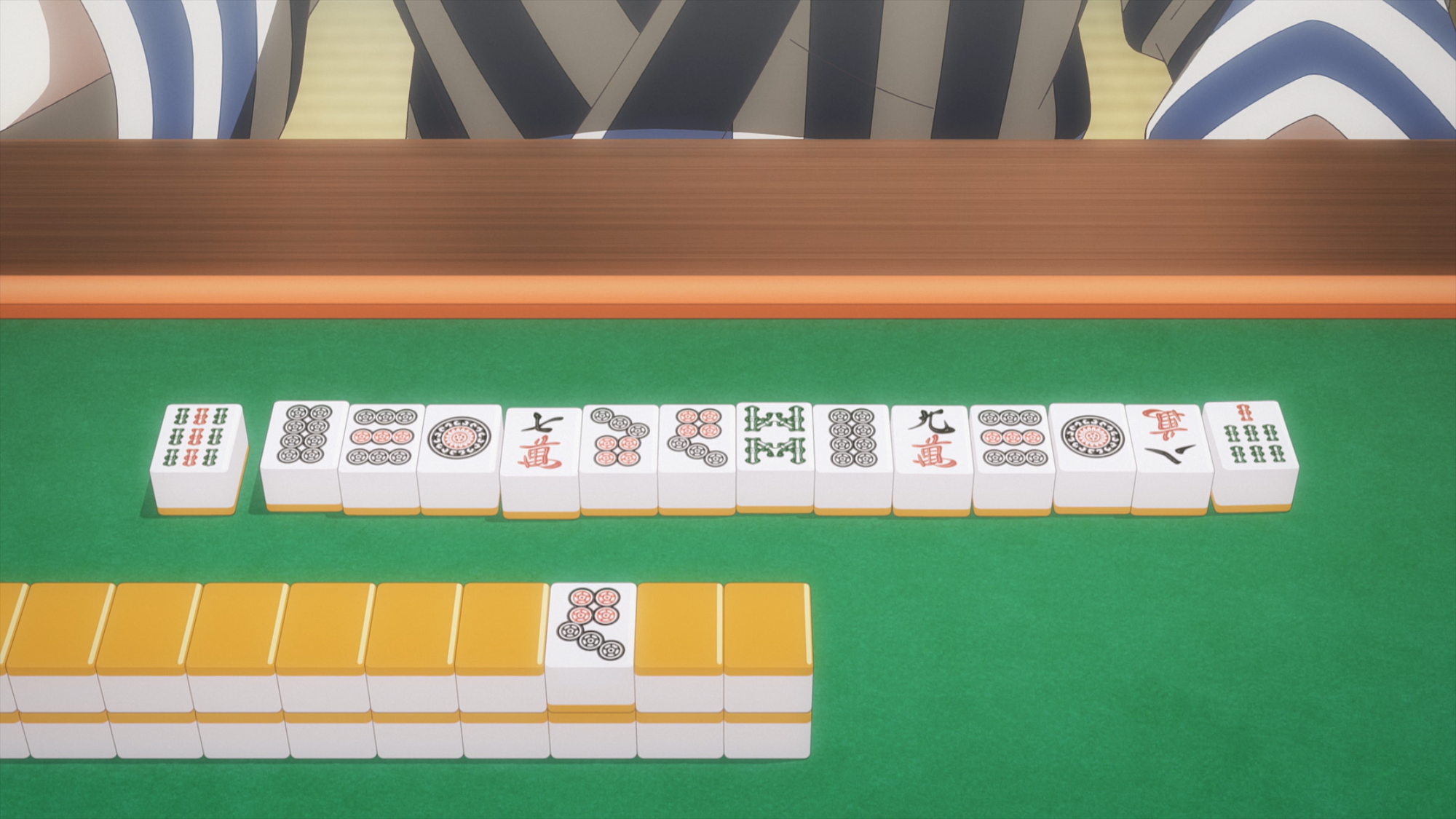
Yes. Some players have such a strong mental grasp on the tiles that they don’t need to put them in order to see the shape of the hand. They visualize the tiles in their shapes and don’t necessarily need to physically place them that way. I’ve seen Japanese pros do it, and I’ve seen people in my own groups do it.
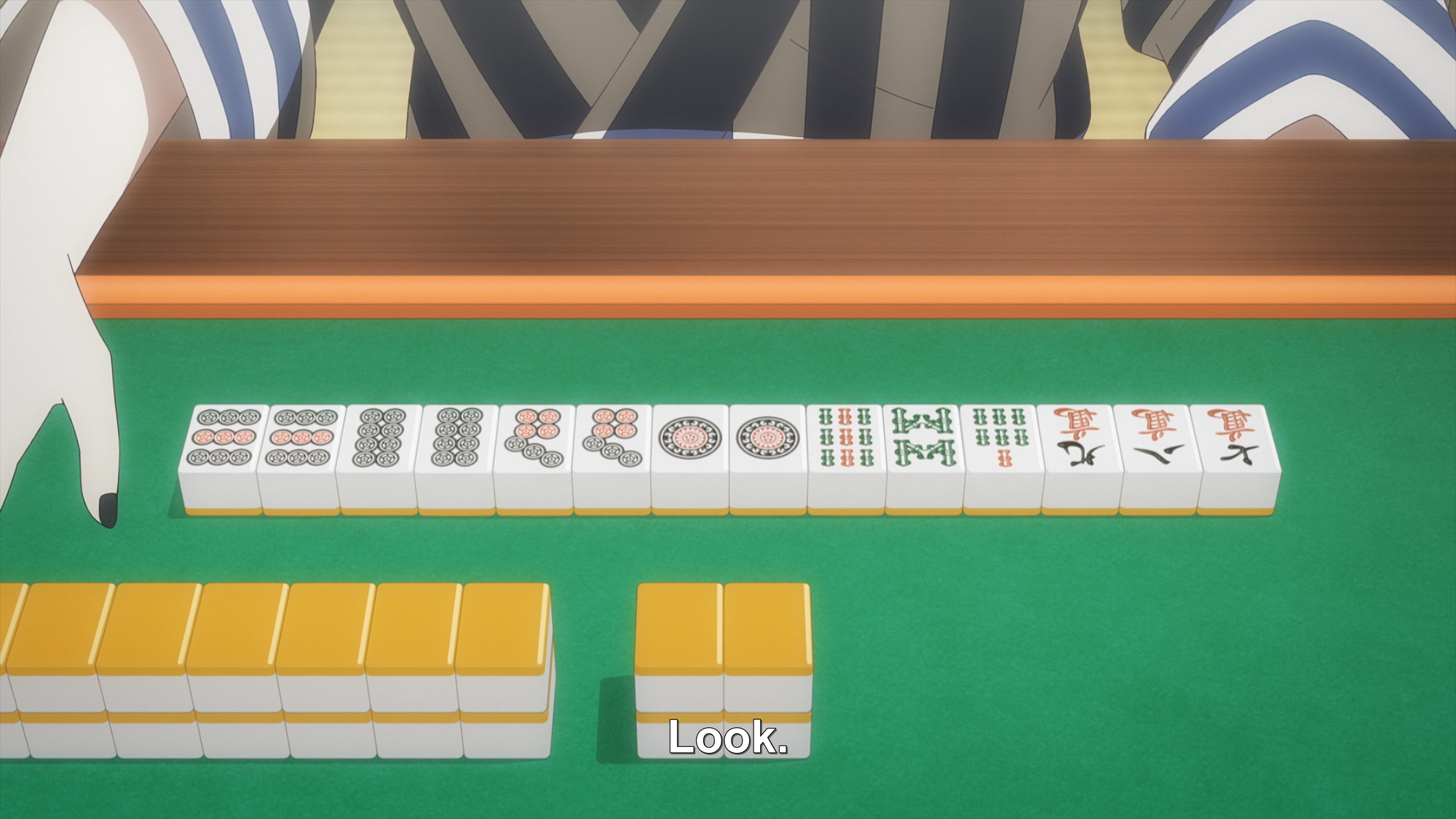
However, it is a point of etiquette not to force others to try and read your scrambled tiles, so even if you can do this, if you win the hand you should put them in order when you call the win and show the table your hand.
In real life, leaving your tiles unscrambled and insisting everybody just read it would come off as obnoxious showboating. Nobody would want to play with you.
There is some confusion in the subs on “agaru” (to “go out” or win) with regards to mahjong; Nashiko asks something more like “Is that really a winning hand?” after seeing the tiles all mixed up, and Emi replies that it is, before sorting it so everyone can see.
All-night mahjong (tetsuman)
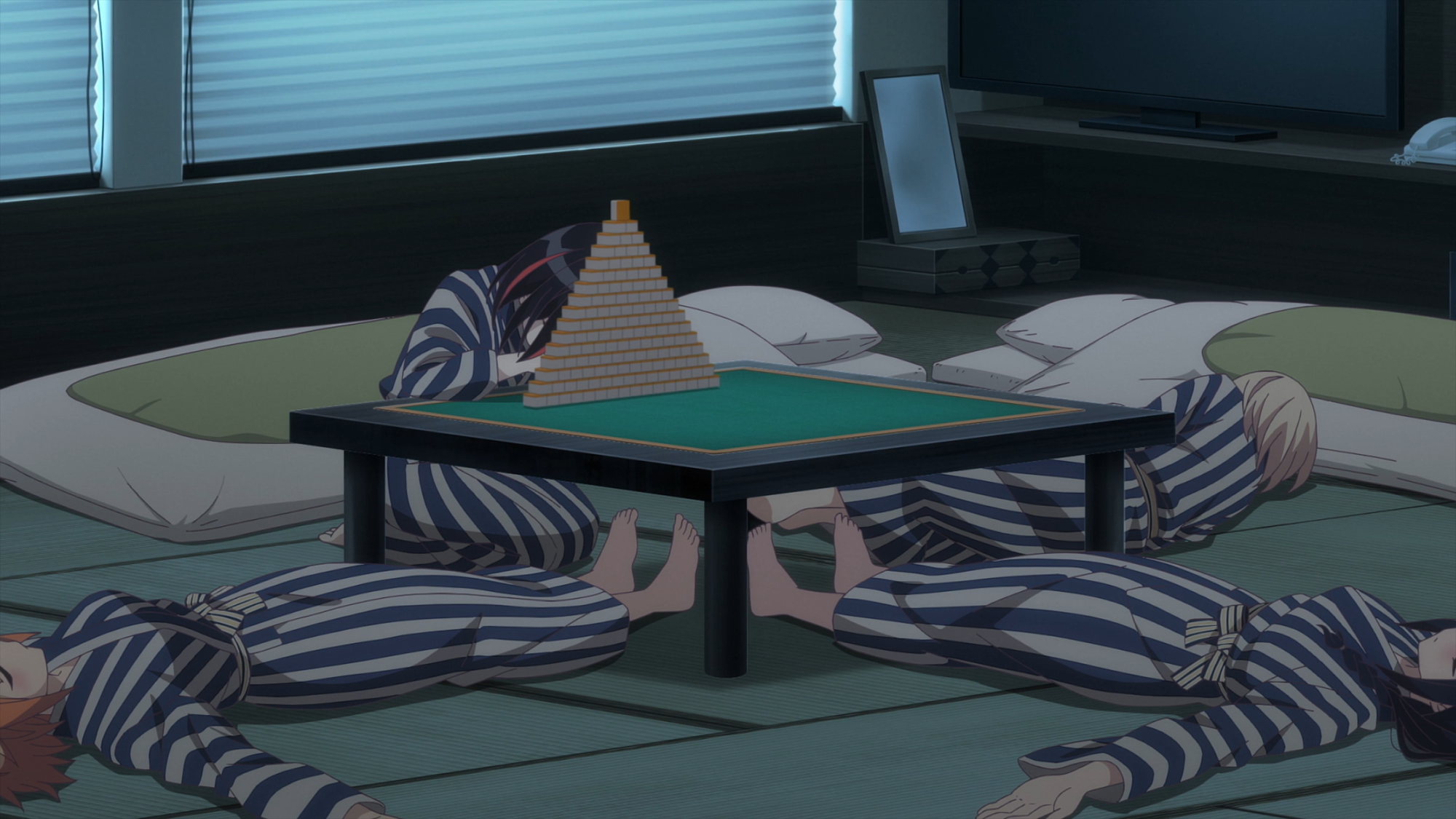
Tetsuman (徹萬)is a term for playing all night. Part of the classical romantic underworld image of Japanese mahjong: a group of high-skilled gamblers getting together at a parlor after hours for an under-the-table all-night session, typically at higher stakes than the law tolerates.
(Incidentally I came upon a popular Youtube “parlor do’s and don’ts” video by a parlor employee, and his first “don’t” is “please don’t try to do all-night mahjong.”)
So of course Emi is on board with the trip because she’s excited about an all-night session against Riche, but Riche has her skin to worry about.
Standard mat
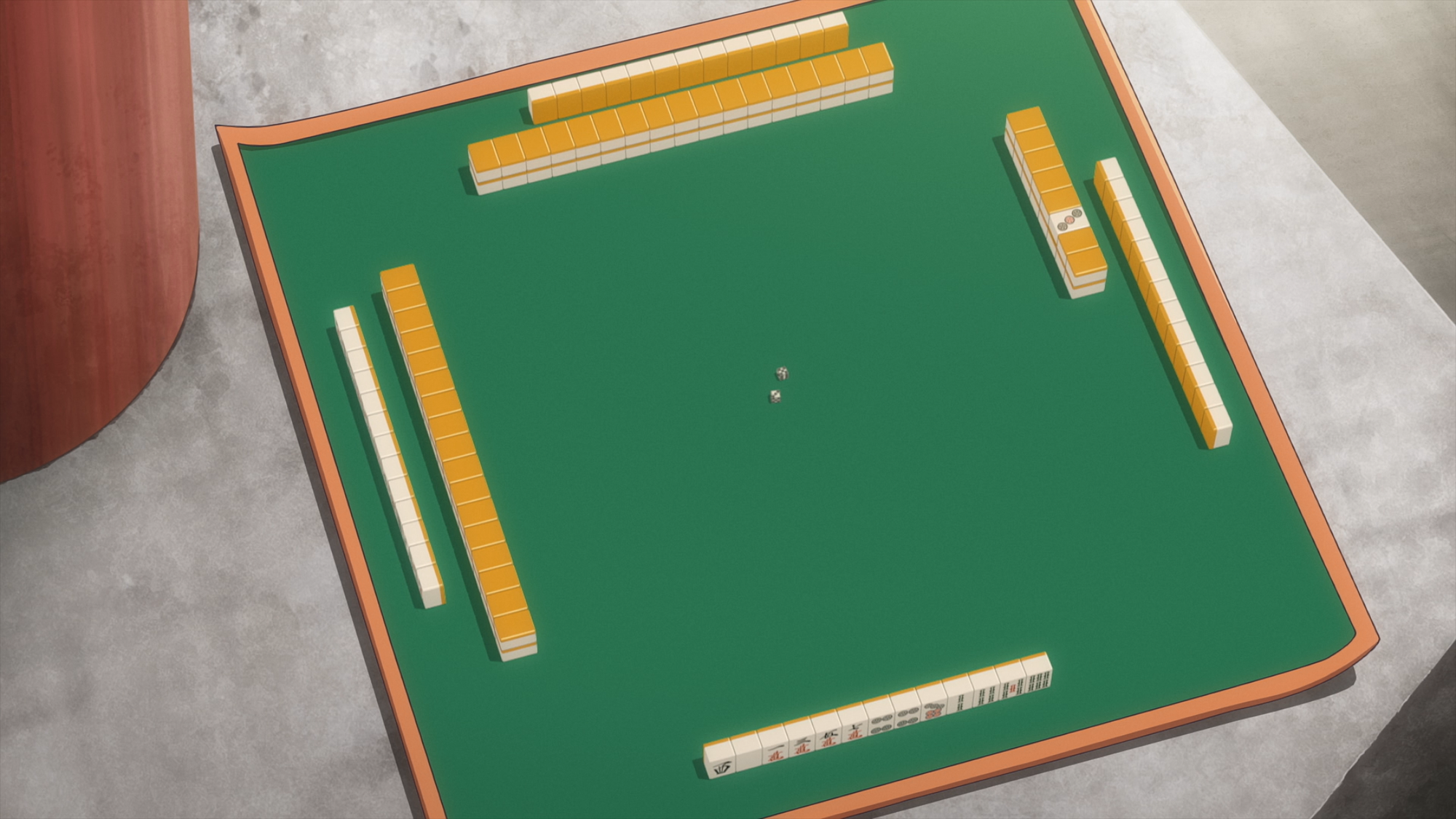
This is the standard table mahjong mat that isn’t a Junk Mat, the only other type you’ll really find on sale. It’s nice heavy rubber with felt in the middle for tiles to slide on unharmed. I have one of these, and though it’s cheaper, the Junk Mat is definitely better.
(Just an aside, don’t play mahjong without a mat. You’ll chip the tiles and probably damage the surface you’re playing on as well.)
As is demonstrated in this scene, it’s not great for the outdoors because unlike the Junk Mat, which is held open by the plastic scoring compartments on each side, there’s nothing weighing down the sides. It could just roll up with the wind, and in this scene it does. This type of mat is absolutely meant for indoors and no place else. There isn’t even really room for a fourth at this “table”. Emi’s really fiending bad here, if she thought this would work.
“It’s going to get all messed up then”
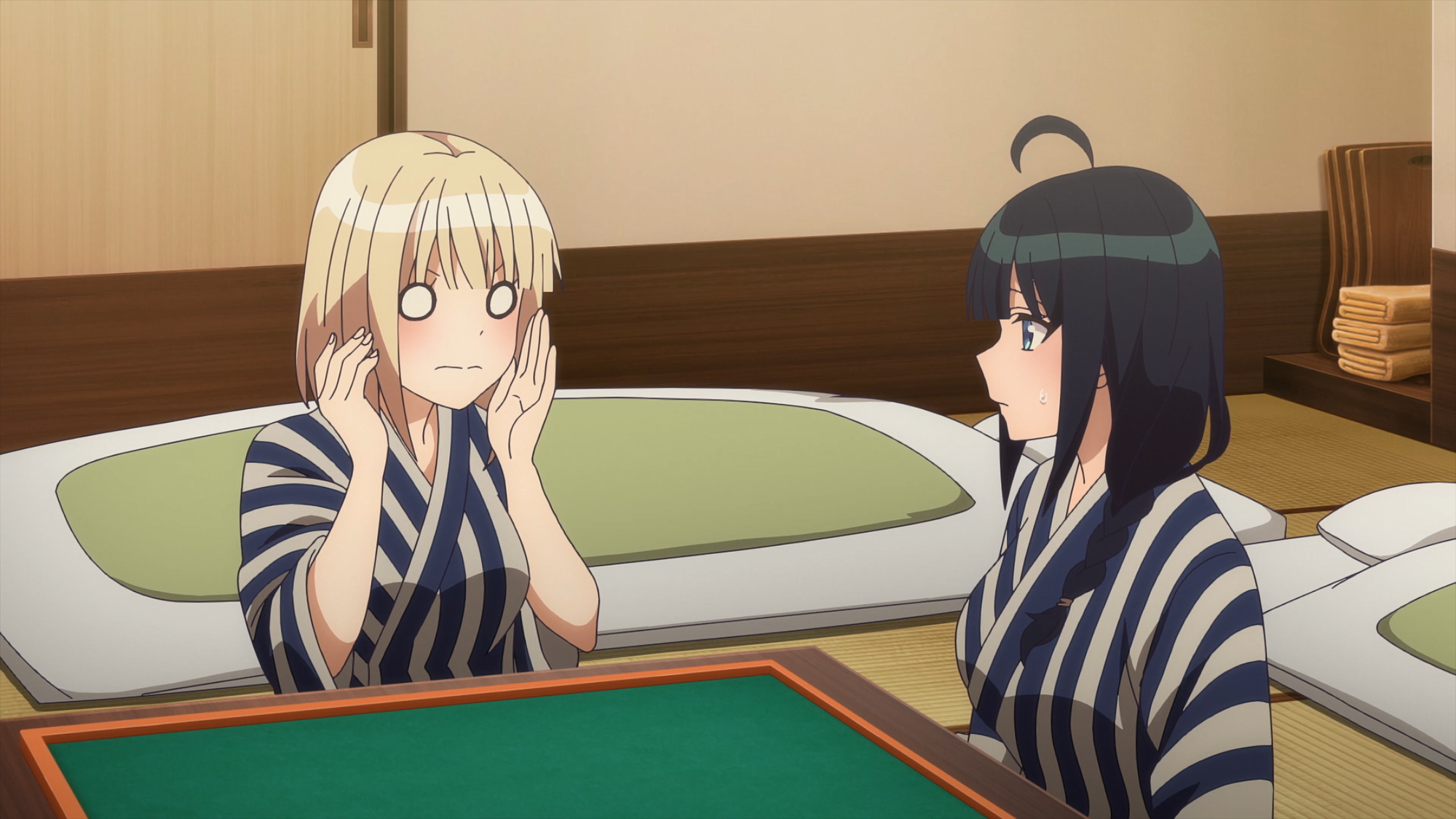
This is “Pai means tiles” punning that the subtitles miss. When Emi suggests Pai take off her makeup as she plays (I’m a guy and whaat), Nashiko says “the tiles (pai) will get all messed up.” Pai gets surprised and blurts out “am I (Pai) gonna get messed up?!” and Nashiko says “no, the mahjong tiles (pai). Why would I be talking about you?”
(This is not Pai’s first comment which could be construed as homoerotic; recall “Wow.”)
Table setup

With the auto table the girls have been using up until this point, the table some of the setup work that starts every game. So Nashiko warns Emi that she’s not 100% on some of that stuff, and also, can she leave the scoring to Emi?
At a table we sometimes pick tiles to determine first dealer and sometimes roll a die for it: my group isn’t super picky on this process. After that, first dealer rolls to determine which wall will be broken.
Riichi mahjong scoring is, bluntly, a pain in the ass (mendokusai, めんどくさい). To correctly count score in riichi you need to memorize a counting method and a scoring table in order to cover edge cases that will come up in maybe 20% of your hands total. Beginners tend to lean on more experienced players to handle score for them, but as Emi warns “you’re going to have to learn it yourself sometime”. To this day I’m quite bad at scoring on the spot, despite knowing most common hands.
Understanding scoring also proves essential to decision-making in advanced play— and if you’re ever in a parlor situation you’re really expected to know your stuff— so if you’re serious about the game, you need to work on it. There is no work-around or shortcut.
I recommend starting from the limit hands (mangan and up), then going to the 30 fu row (most hands are 30 fu), then 20 (for pinfu tsumos), then 40. 25 fu (for seven pairs) is also really easy for console game nerds; it's just 16, 32, 64...
“Two right”
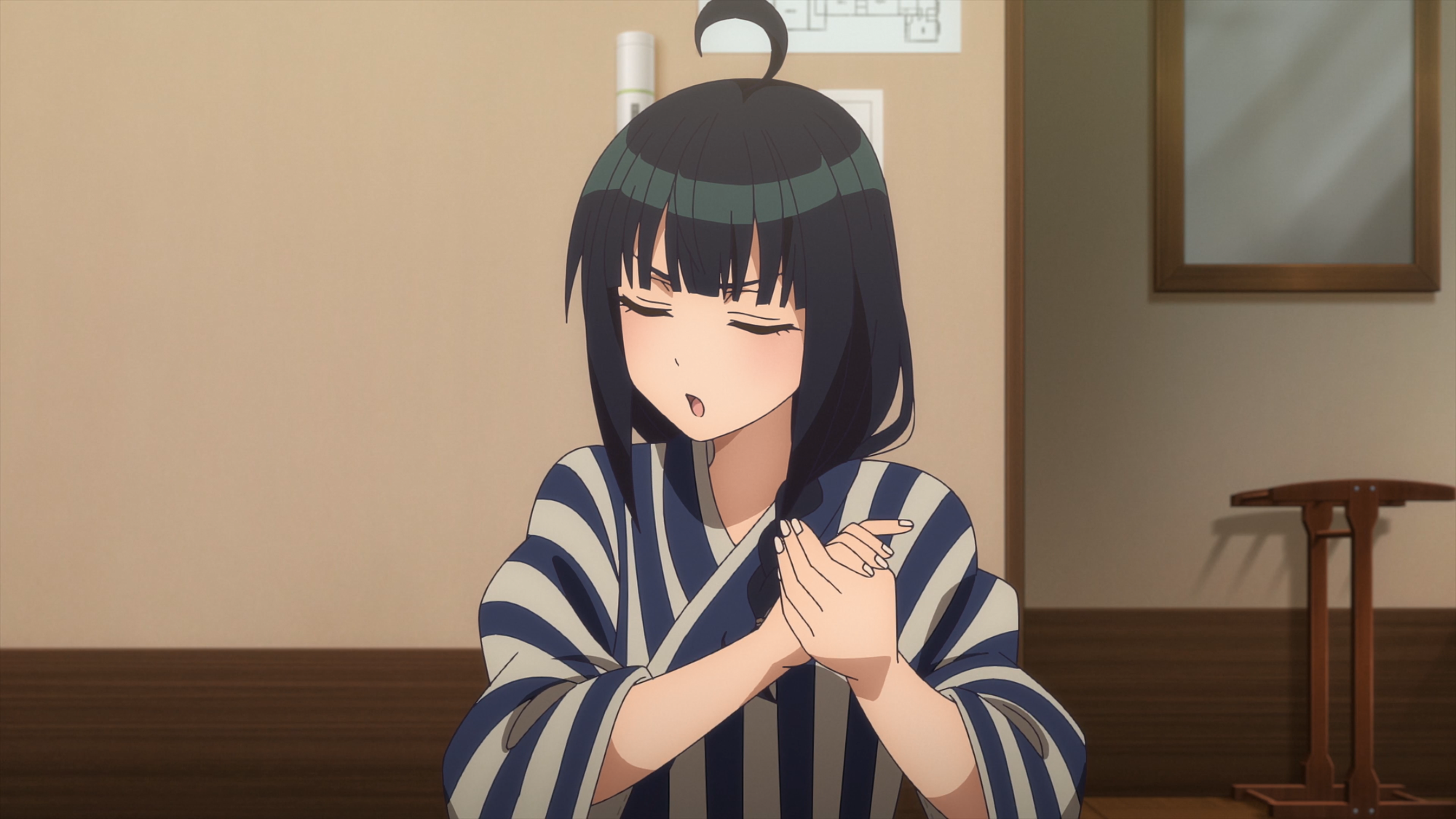
These are specific jargon names for dice rolls that also have the direction in them so that you always know what wall to break. Like the word for two is “two right” (uni) so you know that it’s the player to the left. “Hidarippa” is also “eight left”, and so on.
I had to google this one, as I’ve never heard it before in my life, but it seems awfully useful. Wish we had an English version. I think of 1, 5, and 9 as "self" (there are two dice so you will never roll 1) and count counter-clockwise from those points.
Pai breaks in with “Uni? Uni to eat?” because uni is also sea urchin, pretty common in Japanese seafood.
Tile slamming
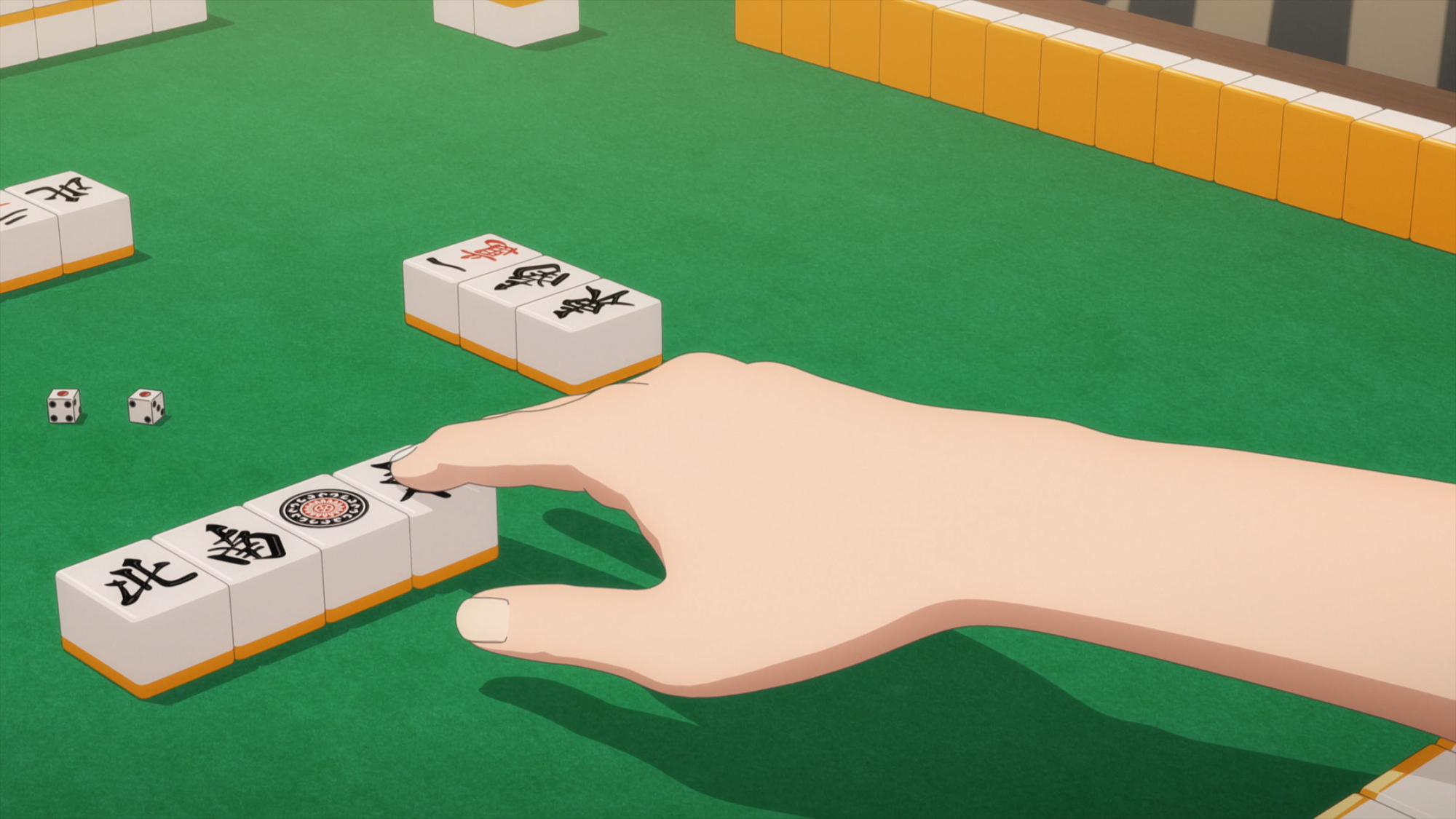
Another classical “cool gambler” mahjong image is the player decisively slamming the tile down on the table with a satisfyingly heavy CLACK as the plastic hits the felt. Though not at all necessary, there’s a certain aesthetic style that players like to discard in. Typically though, you’re not actually slamming the tile the way you see in fiction.
Of course, it still happens and while it’s not exactly frowned upon, the main concern is “please don’t damage the tiles”. Keep in mind if you damage a single tile on a mahjong set in a way that permanently alters the appearance of a tile back, you’ve basically ruined it for play forever by marking a tile. Parlors run through a lot of sets for this reason.
I know people who practice the motion and can very cleanly slap that tile down on the table. It looks pretty cool, if you get it right.
Izumi’s exhausted mumblings
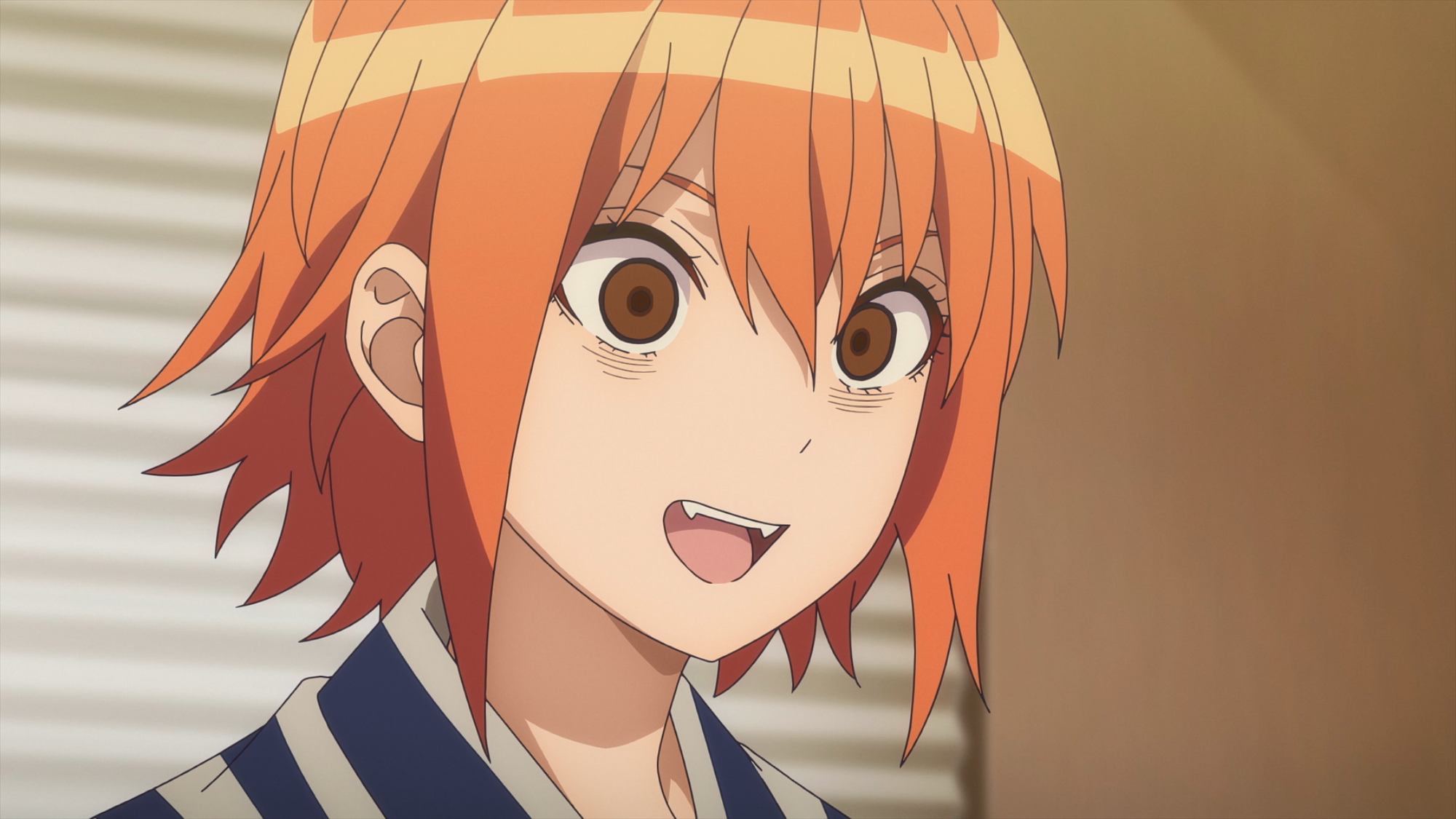
Once Izumi gets that Monster Energy/exhaustion combination in her, she really starts to lose it.
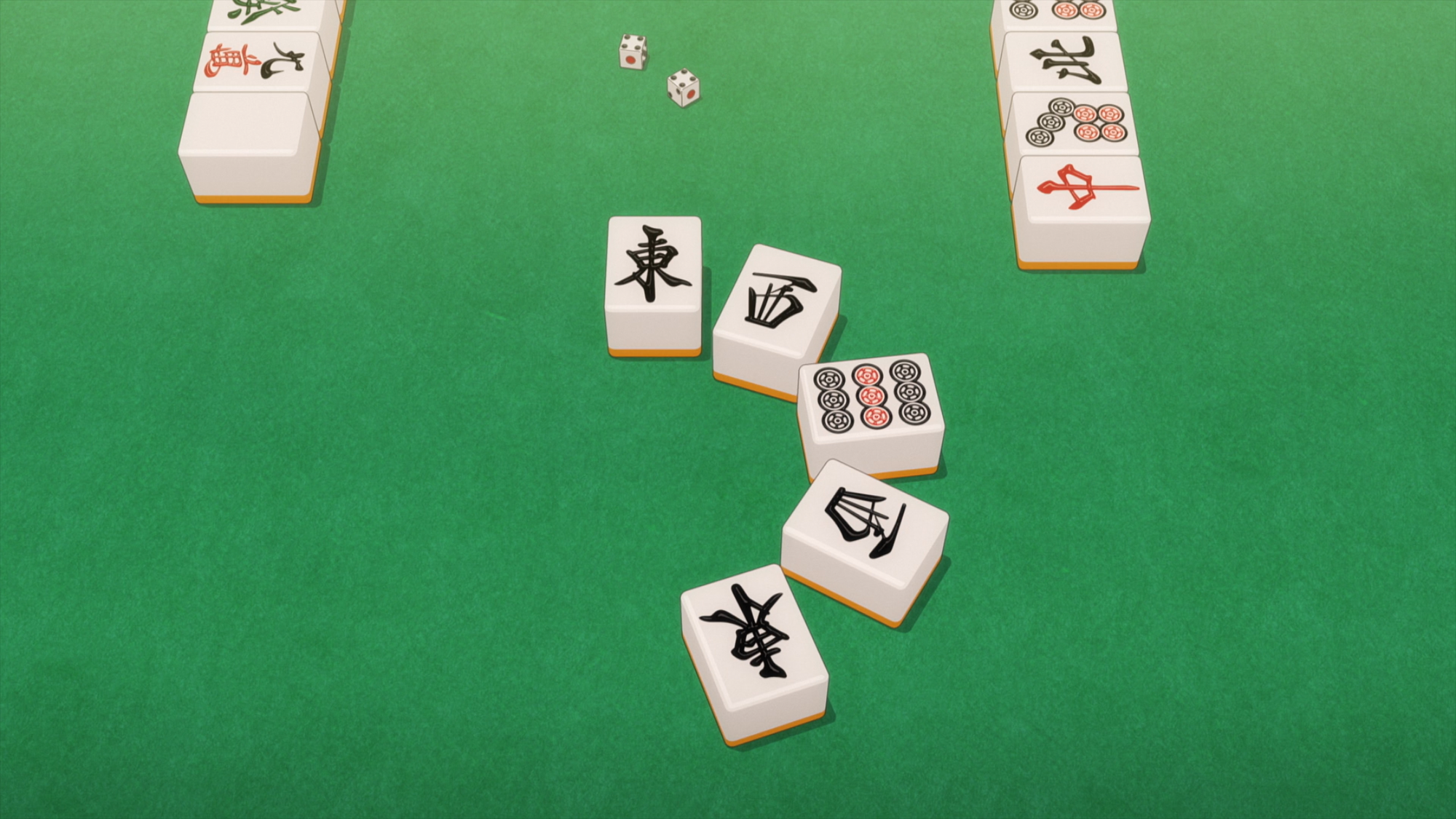
Shinbunshi is a local yaku that I’d never heard of before but was able to find on the Japanese wiki for local yaku. According to that wiki, it’s “a discard (series) like 52125.” Izumi discards east, west, 9p, west, east, so I am going to assume it’s having a ABCBA pattern in discards. This adds 1 han to your hand, like a dora would, if you win.
(New York’s version of shinbunshi is “NEWS in discards”: north, east, west, south in that order. We don’t score it.)
Yaku based on what’s in your discards are exceedingly rare, but the one you’ll find in many common rule sets is nagashi mangan. If a player only discards honors and terminals for the entire round, and the round makes it to the end without anyone else winning, they win a mangan. It’s kind of a “consolation” yaku that gives truly garbage hands a narrow road to victory. I’ve never hit one myself.

You can read the kanji on the tiles chun and xia as “naka” and “nishi”, which is just a normal Japanese last name. So when she mutters “Nakanishi…” out of nowhere, that’s all that is.

Nagashima Spa Land is a major Japanese amusement park. I have never been, but looking at some photos, I suspect that Izumi is specifically thinking of its large circular pool as she, for some reason, has been arranging her own discard pool into a circle. (I don’t believe the “pool” term is used to describe discards in Japanese, so I don’t think this qualifies as a pun.)
Nashiko’s monster hand

Nashiko, probably unaware both from inexperience and lack of sleep, cuts off Emi’s dream winning hand and pulls a double yakuman. The first criteria it fills is suu ankou: four concealed triples. The second criteria is all green, an American invention: it’s when you make a hand using only tiles containing only green. The catch is that doesn’t mean only hatsu and sou tiles, because the sou tiles with red on them aren’t eligible for all green anymore. So you have to make a hand out of hatsu and only 23468s.
The point value of this hand is through the roof (64,000 or 96,000 for dealer) and likely ended the game even if three of the players at the table weren't unconscious.
Emi flips the dora— looks like they were too tired to remember this at the start– and ura dora indicators, even though it no longer has any bearing on the point score. Even so, it turns out Nashiko has 6 dora in her hand on top of the double yakuman. I don’t think this is so much an error as it is Emi wondering “just how lucky is she?!”
“There is no flow in mahjong”

Izumi blurts this out before passing out. It doesn't really matter, just like the dora don't really matter, but this tile is Nashiko's other winner.
The “flow” (nagare, 流れ) is an unscientific but still very popular notion that effectively amounts to the psychological phenomenon of being “on a roll”. You know when one player seems to seize the game? They start pulling big hands one after the other, they never deal in even when it’s dangerous, and it just keeps going as they demolish the game, while the other three players have no chance whatsoever? We say they’ve got the flow. The movement of the game itself is on their side.
There is no such thing as flow in mahjong. No matter how many times you flip a coin in a row, no matter how many times it lands on heads in a row, there’s still only a 50% chance that a flipped coin will land on heads. However, precisely because the flow is not real, because these things are not supposed to happen, there is a psychological ripple effect when a player gets abnormally lucky and seizes the momentum. Ask anyone who’s been on the wrong side of an explosive match where one player runs away with the game.
When you lose to something ridiculous, you might want to remind yourself: “There is no flow in mahjong”. Don’t let it get to you, and get ready to keep playing your best in the next round. That’s what Izumi is trying to do… until she passes out, anyway.
Unrelated to anything, I think this is the first episode of this show I really liked?! This group’s dynamic was not complete without Emi, the maniacally driven one, to serve as a foil to the laid-back attitude of the others, and indeed the show's lack of any movement. She needed to get in here a lot sooner. The all-night mahjong sequence was legitimately funny.
We're halfway through this series! Next time is a beach episode. I am now certain the "pai" joke is intentional.



